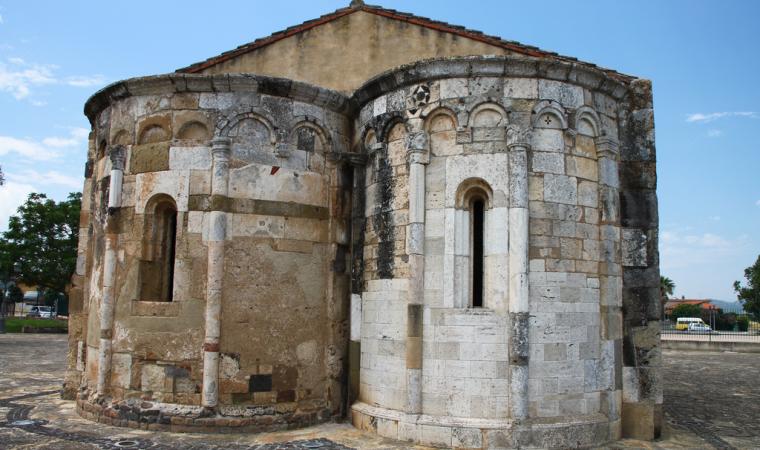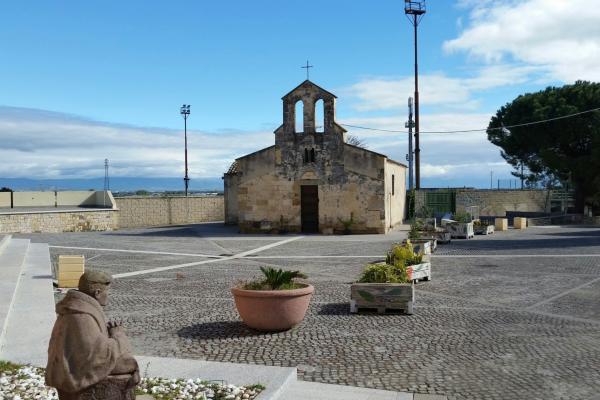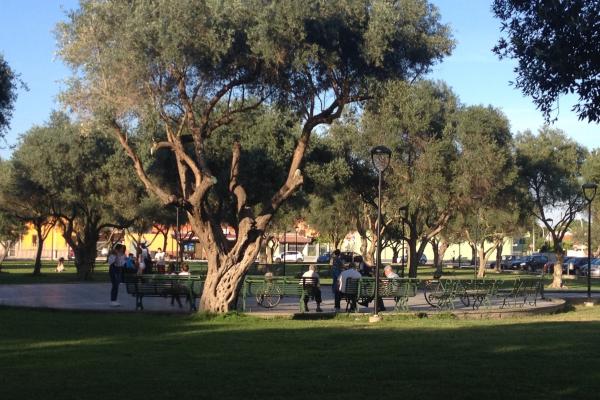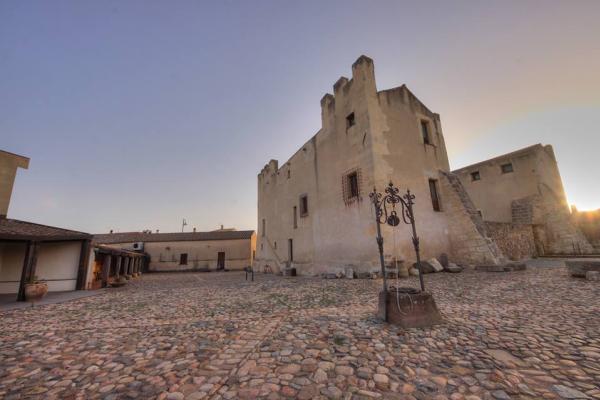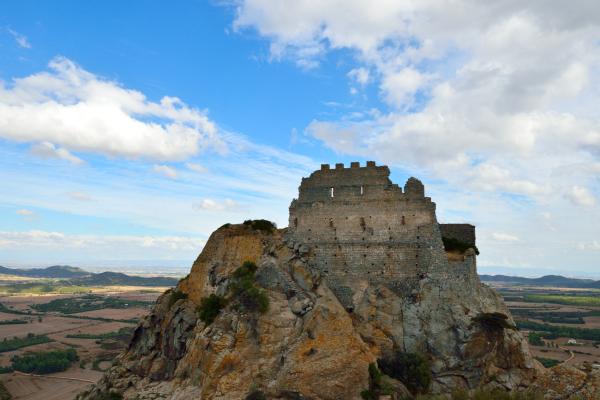Its plain, crossed by the Cixerri river and bounded by hills extending as far as Monte Arcosu, has seen uncovered a precious heritage from prehistory to the early Middle Ages. Villaspeciosa is a town of 2,500 inhabitants on the border between Campidano di Cagliari, being twenty kilometres away, and Sulcis-Iglesiente. Its 'courtyard' houses are arranged around the parish church of the Beata Vergine Assunta, built in the late 16th century and safeguarding the famous 'Crocifisso Doloroso'. Inside the municipal park, in a churchyard paved in stone, stands the unique church of San Platano, whose Byzantine worship was introduced along with that of Sant'Antioch, as told by a mural at the entrance of the village. The saint is celebrated in August with a procession accompanied by goccius and launeddas, associated with the Sagra de s’abiu (Alder fair).
Its plain, crossed by the Cixerri river and bounded by hills extending as far as Monte Arcosu, has seen uncovered a precious heritage from prehistory to the early Middle Ages. Villaspeciosa is a town of 2,500 inhabitants on the border between Campidano di Cagliari, being twenty kilometres away, and Sulcis-Iglesiente. Its 'courtyard' houses are arranged around the parish church of the Beata Vergine Assunta, built in the late 16th century and safeguarding the famous 'Crocifisso Doloroso'. Inside the municipal park, in a churchyard paved in stone, stands the unique church of San Platano, whose Byzantine worship was introduced along with that of Sant'Antioch, as told by a mural at the entrance of the village. The saint is celebrated in August with a procession accompanied by goccius and launeddas, associated with the Sagra de s’abiu (Alder fair).
The church, built by the 'Vittorini' (the Benedictine monks of the Abbey of San Vittore in Marseilles) in 1141, has preserved its original Romanesque layout, being unusual for French workers, having with two-barrel vaulted naves and ending in semi-circular apses. The façade impresses with its polychrome white, grey and blue ashlars, marble, tuff and trachyte. The material is 'reused', hailing from the nearby site of San Cromazio, a small town in Roman Imperial times - perhaps a stopover spot along the road to Sulci (Sant'Antioco) – featuring a hot-spring system, the structure of which can be recognised throughout the various environments. Erected above the baths in the 4th century AD was a building for Christian worship adorned with a beautiful polychrome mosaic, consisting of panels with plant and geometric motifs arranged in a horseshoe around a rectangle depicting vessels for libations. At 160 square metres, it is the largest mosaic on the island. The village was inhabited until the Byzantine age (6th century), before its population moved to the site of the current town. Other remnants from Roman times, specifically the era of the Roman Republic, can be seen in sites that were previously Punic, with the necropolis of Bega Deretta being a highlight. The territory was largely populated in the Nuragic age, especially near the springs. Between the late Bronze Age and the beginning of the Iron Age (12th-14th century BC), came the settlements of Bidda Itzu and Is Crus, along with the 'corridor' tomb of Monte Truxionis. To the west of the village is the settlement of Mitza Cuccureddus, arising near the Nuraghe of Monte Silixianu and comprising a rectangular building and an agglomeration of huts. The inhabited Nuragic spring (Mitza) is bounded by a megalithic wall. The entire site is surrounded by a forest of holm oaks and Mediterranean maquis. To explore is the area of San Giovanni di Seruis Lake, where the ruins of the church dedicated to the saint can be found in the area of the decommissioned military armoury, a meeting place for fans of war re-enactments, and an area housing a water park and go-kart track. The culinary tradition is greatly honoured, amongst the first course dishes not to be miss is sa frègua groga, fregola with saffron. The dishes are based on semolina, legumes (for soups) and 'wild' crops (asparagus, thistles and mushrooms). The wines include Nuragus and Monica.




